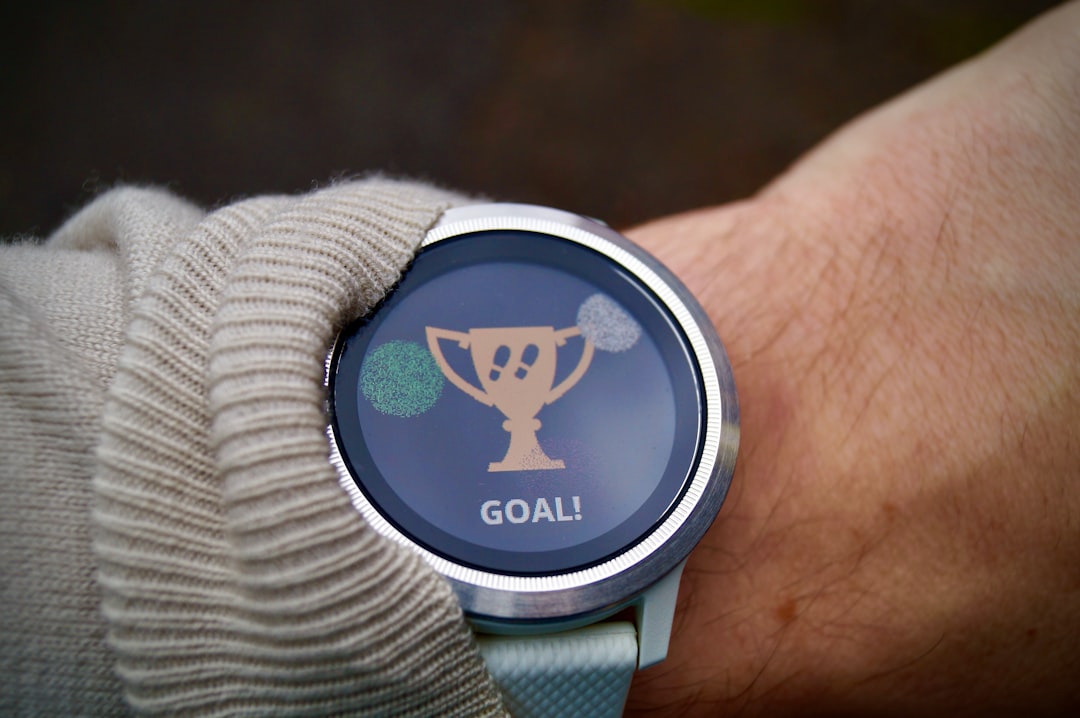In an age where technology is advancing at an unprecedented pace, artificial intelligence (AI) has emerged as a transformative force across various sectors, including cultural heritage preservation. The intersection of AI and cultural heritage is not merely a trend; it represents a profound shift in how we approach the safeguarding of our historical artifacts, artworks, and traditions. As societies grapple with the challenges of preserving their cultural legacies in the face of climate change, urbanization, and globalization, AI offers innovative solutions that can enhance our ability to document, restore, and protect these invaluable resources.
AI-based cultural heritage preservation encompasses a wide array of applications, from digital restoration techniques to automated classification systems. By leveraging machine learning algorithms and computer vision technologies, researchers and conservators can analyze vast datasets of cultural artifacts, enabling them to make informed decisions about preservation strategies. This technological revolution not only streamlines the preservation process but also democratizes access to cultural heritage, allowing a broader audience to engage with and appreciate the richness of human history. AI systems are revolutionizing industries, for more information visit AI systems.
Key Takeaways
- AI is revolutionizing the preservation of cultural heritage by offering innovative solutions for restoration, classification, recognition, and preservation of artifacts and historical documents.
- Digital restoration of paintings using AI allows for the preservation of deteriorating artworks, bringing them back to their original state and ensuring their longevity for future generations.
- Automatic artifact classification in cultural heritage streamlines the process of organizing and categorizing artifacts, making it easier for researchers and historians to access and study them.
- Historical recognition in old photographs with AI enables the identification and preservation of historical moments and figures, contributing to a more comprehensive understanding of the past.
- Challenges and limitations of AI-based cultural heritage preservation include issues of accuracy, data bias, and the need for human oversight to ensure the ethical and responsible use of AI in this field.
Digital Restoration of Paintings using AI
One of the most captivating applications of AI in cultural heritage preservation is the digital restoration of paintings. Traditional restoration methods often require painstaking manual work by skilled conservators, who must carefully analyze the original artwork and make decisions about how to repair or restore it. However, AI has introduced a new paradigm in this field, enabling the restoration process to be both faster and more precise.
By utilizing deep learning algorithms trained on extensive datasets of art history, AI can predict how missing or damaged sections of a painting might have originally appeared. For instance, researchers have developed AI models that can analyze brush strokes, color palettes, and compositional elements to generate realistic reconstructions of damaged artworks. These models can even simulate the aging process of paint and canvas, allowing conservators to visualize how a painting might evolve over time.
The result is a more informed approach to restoration that respects the artist’s original intent while also providing a clearer understanding of the artwork’s historical context. This technology not only enhances the aesthetic experience for viewers but also serves as a valuable tool for art historians and conservators alike. Moreover, AI-driven digital restoration can facilitate the creation of interactive experiences for audiences.
Virtual reality (VR) and augmented reality (AR) applications can incorporate AI-generated restorations, allowing users to engage with artworks in ways that were previously unimaginable. Imagine walking through a virtual gallery where you can see a masterpiece in its original glory, complete with vibrant colors and intricate details that have long been lost to time. This immersive experience not only enriches our understanding of art but also fosters a deeper appreciation for the cultural narratives embedded within these works.
Automatic Artifact Classification in Cultural Heritage

The sheer volume of artifacts housed in museums and cultural institutions presents a significant challenge for curators and researchers tasked with cataloging and preserving these items. Manual classification is often labor-intensive and prone to human error, which is where AI comes into play. Machine learning algorithms can be trained to automatically classify artifacts based on various attributes such as shape, material, and historical context.
This automation not only speeds up the classification process but also enhances accuracy by minimizing subjective biases. AI systems can analyze images of artifacts and extract features that are often imperceptible to the human eye. For example, advanced computer vision techniques can identify subtle patterns or markings that indicate an artifact’s origin or age.
By cross-referencing this data with existing databases, AI can provide insights into an artifact’s historical significance and potential connections to other items within a collection. This capability is particularly valuable for institutions with limited resources, as it allows them to maximize their collections’ potential without overwhelming their staff. Furthermore, automatic artifact classification opens up new avenues for research and collaboration among cultural institutions worldwide.
By creating standardized classification systems powered by AI, museums can share data more effectively, leading to richer narratives about cultural heritage across different regions. This interconnectedness fosters a global dialogue about history and identity, allowing diverse cultures to learn from one another while preserving their unique legacies.
Historical Recognition in Old Photographs with AI
Old photographs serve as windows into the past, capturing moments that define our collective history. However, many of these images are at risk of deterioration or loss due to age and environmental factors. AI has emerged as a powerful tool for historical recognition in old photographs, enabling researchers to extract valuable information from these visual records.
Through image recognition algorithms, AI can identify people, places, and events depicted in photographs, providing context that may have been lost over time. One notable application of this technology is in the digitization of archival collections. By employing AI-driven image analysis, institutions can quickly catalog large volumes of photographs while simultaneously enhancing their quality through restoration techniques.
For instance, algorithms can remove noise or blur from images, making them clearer and more accessible for research purposes. This process not only preserves the visual integrity of historical photographs but also ensures that future generations can engage with these important cultural artifacts. Moreover, AI’s ability to recognize faces and objects in old photographs has significant implications for genealogical research and historical scholarship.
By cross-referencing identified individuals with existing databases or family trees, researchers can uncover connections between people and events that may have otherwise remained obscured. This capability enriches our understanding of history by providing a more nuanced view of how individuals and communities have interacted over time.
Challenges and Limitations of AI-based Cultural Heritage Preservation
Despite the promising advancements in AI-based cultural heritage preservation, several challenges and limitations must be addressed to fully realize its potential. One significant concern is the quality and availability of data used to train AI models. In many cases, datasets may be incomplete or biased, leading to inaccurate predictions or classifications.
For instance, if an AI system is trained predominantly on Western art styles, it may struggle to accurately analyze or restore non-Western artifacts. Ensuring diverse and representative datasets is crucial for developing robust AI applications that respect the richness of global cultural heritage. Another challenge lies in the interpretative nature of cultural heritage itself.
While AI can analyze patterns and generate insights based on data, it lacks the human capacity for empathy and contextual understanding. Cultural artifacts are often imbued with meanings that extend beyond their physical attributes; they carry stories, emotions, and histories that require human interpretation. As such, there is a risk that over-reliance on AI could lead to oversimplification or misrepresentation of cultural narratives.
Additionally, the rapid pace of technological advancement raises questions about the long-term sustainability of AI applications in cultural heritage preservation. As software evolves and new algorithms emerge, there is a need for ongoing training and adaptation of existing systems. This necessitates investment in both technology and human expertise to ensure that cultural institutions can effectively leverage AI while maintaining their commitment to preserving cultural heritage.
Ethical Considerations in AI-based Cultural Heritage Preservation

Ownership and Control of Cultural Data
As institutions digitize collections and share them online, questions arise regarding who has the right to access and use this information. Indigenous communities and marginalized groups may have specific claims to their cultural heritage that need to be respected in digital spaces. Ensuring equitable access while honoring traditional knowledge systems is essential for fostering trust between institutions and communities.
Bias in Algorithmic Decision-Making
The potential for bias in algorithmic decision-making raises concerns about whose narratives are prioritized or marginalized in the preservation process. It is crucial for developers and researchers to engage with diverse stakeholders throughout the design and implementation phases to ensure that AI applications reflect a multiplicity of perspectives.
Transparency and Accountability
As algorithms become increasingly complex, understanding how they arrive at specific conclusions becomes more challenging. Institutions must strive for transparency in their use of AI technologies by providing clear explanations about how data is collected, processed, and utilized. This openness fosters accountability and builds public trust in the preservation efforts undertaken by cultural institutions.
Future Implications and Opportunities in AI-based Cultural Heritage Preservation
Looking ahead, the future implications of AI-based cultural heritage preservation are both exciting and transformative.
For instance, advancements in natural language processing (NLP) could enable AI systems to analyze historical texts alongside visual artifacts, creating richer narratives that connect different forms of cultural expression.
Furthermore, collaborative projects between cultural institutions and tech companies hold immense potential for innovation in this field. By pooling resources and expertise, stakeholders can develop cutting-edge tools that address specific challenges faced by museums and archives worldwide. These partnerships could lead to breakthroughs in areas such as predictive modeling for artifact conservation or enhanced user experiences through immersive technologies like virtual reality.
The democratization of access to cultural heritage through AI also presents opportunities for education and engagement. Online platforms powered by AI could facilitate interactive learning experiences that allow users to explore diverse cultures from their own homes. This accessibility not only broadens public engagement with cultural heritage but also fosters cross-cultural understanding in an increasingly interconnected world.
The Role of AI in Preserving Cultural Heritage
In conclusion, artificial intelligence stands at the forefront of a revolution in cultural heritage preservation that promises to reshape how we document, restore, and engage with our shared history. From digital restoration techniques that breathe new life into damaged artworks to automatic classification systems that streamline artifact cataloging, AI offers innovative solutions that enhance our ability to protect invaluable cultural resources. However, as we embrace these technological advancements, it is essential to remain mindful of the challenges and ethical considerations they entail.
By prioritizing diversity in data representation, fostering transparency in algorithmic processes, and engaging with communities whose heritage we seek to preserve, we can ensure that AI serves as a force for good in safeguarding our collective past. As we look toward the future, the opportunities presented by AI-based cultural heritage preservation are boundless. By harnessing this technology responsibly and collaboratively, we can create a more inclusive narrative that honors the richness of human experience while inspiring generations to come.
The role of AI in preserving cultural heritage is not just about technology; it is about connecting people with their histories and fostering a deeper appreciation for the diverse tapestry of cultures that shape our world today.
AI-based Cultural Heritage Preservation is a fascinating field that encompasses various applications such as Digital Restoration of Paintings, Automatic Artifact Classification, and Historical Recognition in Old Photographs. One related article that delves into the challenges of merging virtual and physical realities is











Leave a Reply